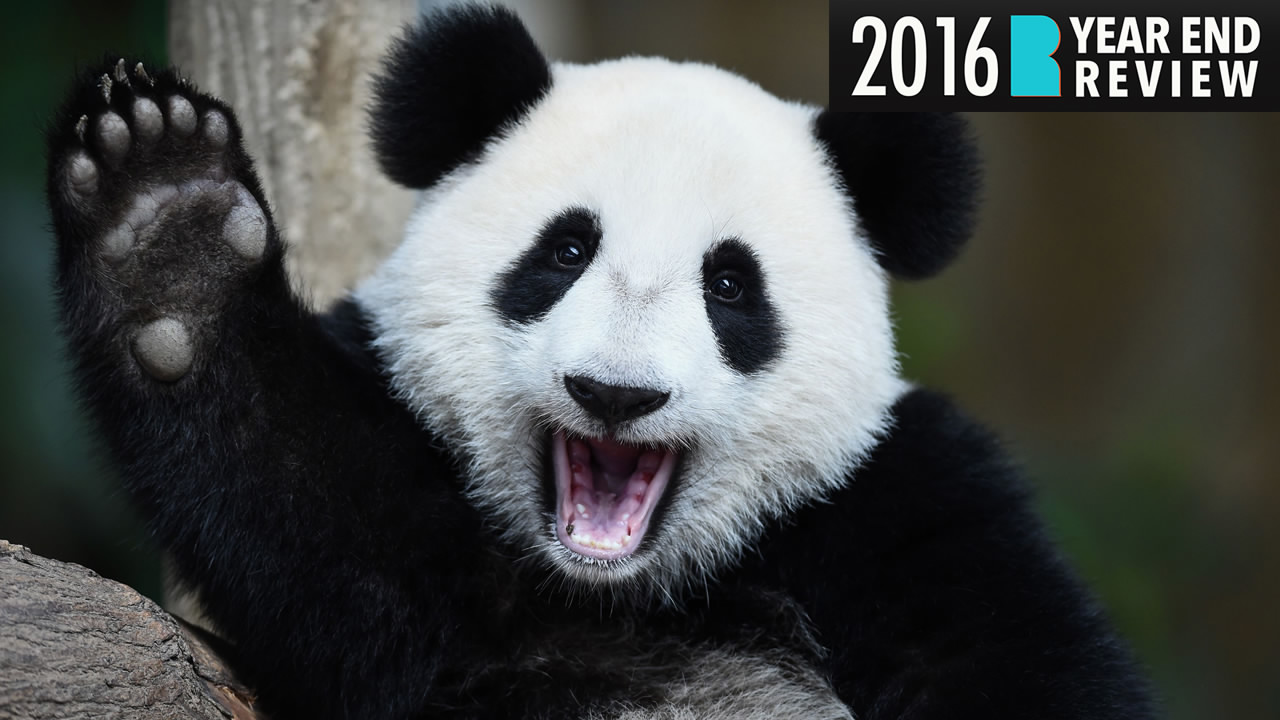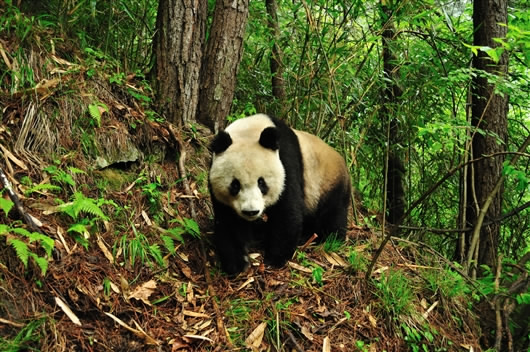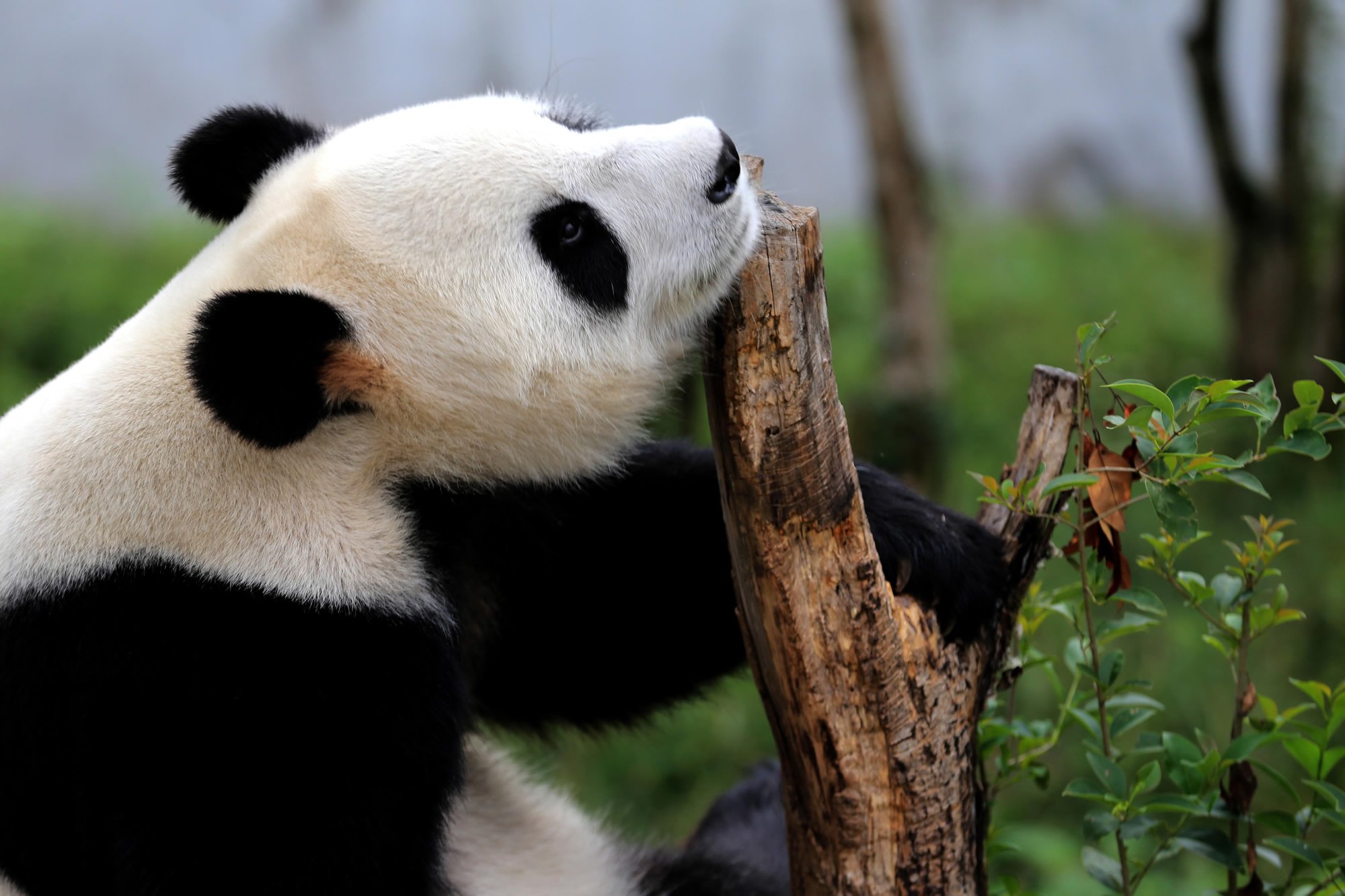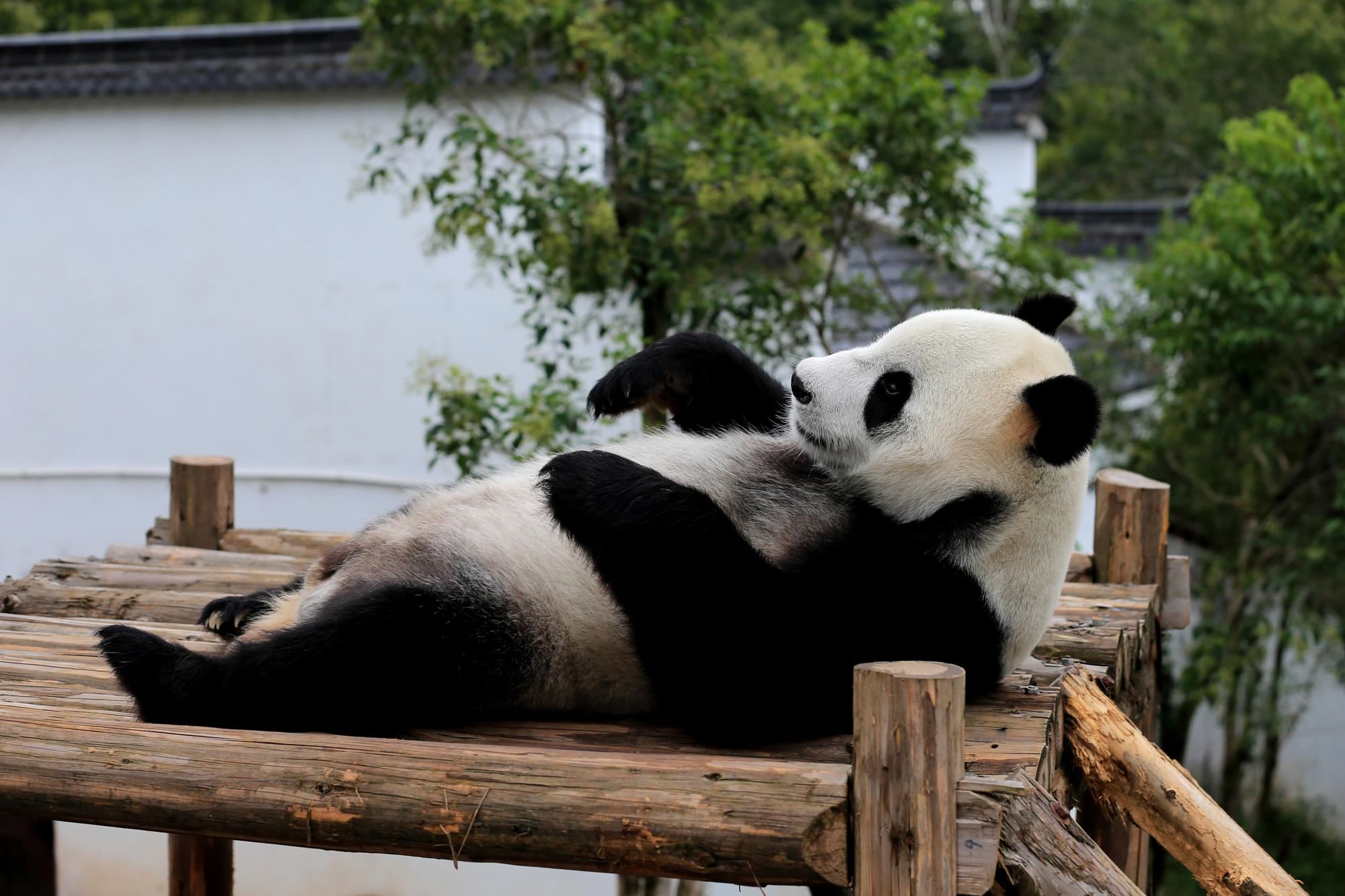
China
12:00, 03-Jan-2017
Giant panda off the endangered list – but is it safe?
Updated
10:29, 28-Jun-2018

-China’s giant panda has long been an international symbol of animal conservation
-The giant panda was previously classified as ‘endangered’ meaning it was at risk of extinction.
-China has been making efforts to save the giant panda from extinction since the 1970’s

The International Union for Conservation of Nature (IUCN), the world’s largest animal protection organization, declared in September 2016 that the giant panda is no longer an endangered species, downgrading the rare bear’s status to “vulnerable”.
The IUCN revealed that the worldwide population of the giant panda rose by 17 percent between 2004 and 2014. There were 1,864 giant pandas in China in 2014, up from 1,596 in 2004 and just 1,114 in 2000.

Giant panda in Qinling Mountains, October 12, 2016 / Xinhua Photo
Giant panda in Qinling Mountains, October 12, 2016 / Xinhua Photo
Expanding suitable habitat has contributed to the panda population spike. Forest protection and reforestation measures resulted in an 11.8 percent increase in occupied habitat and a 6.3 percent increase of other suitable habitats over the 10-year period.
But does the downgraded risk status mean efforts to protect the giant panda can be relaxed and that the job is done? China’s answer is “no”.
CHINA HAS TAKEN A CRUCIAL ROLE IN PANDA PROTECTION

Pandas in Washington, US, August 21 /CFP Photo
Pandas in Washington, US, August 21 /CFP Photo
A pronounced effort to save the giant panda has been underway since the 1970s, and China’s creation of panda reserves in the 1990s vastly increased available habitats. The country’s successful efforts to protect the animal were widely acknowledged in the wake of the downgrading of its endangered status.
China took five steps to construct a friendly environment for pandas and accelerate panda birth and survival rates. The five steps included offering subsidies to farmers living around bamboo habitats, inviting international organizations to participate in panda research, and building up artificial insemination centers.

Newborn pandas in Chengdu, November 4, 2016 /CFP Photo
Newborn pandas in Chengdu, November 4, 2016 /CFP Photo
The IUCN also applauded China for its attack on illegal hunting and habitat reservation. “When push comes to shove, the Chinese have done a really good job with pandas,” John Robinson, a chief conservation officer at the Wildlife Conservation Society said.
Ginette Hemley, a senior vice-president for wildlife conservation at the World Wildlife Fund also said China has done a great job in protecting panda habitats and added that China is a wonderful example of a country committed to animal conservation.
Chinese news website NetEase also highlighted China’s attempts to promote the panda overseas. In 1984, China initiated a special strategy whereby bears were loaned to other countries. This boosted the image of the panda and helped raise funds for its protection in China.

Giant panda in Anhui Province, October 8, 2016 /CFP Photo
Giant panda in Anhui Province, October 8, 2016 /CFP Photo
PANDAS STILL NEED OUR HELP
The Chinese Forestry Administration welcomed the IUCN’s decision to downgrade the risk status of the panda, but stressed that the animal still needs protection. It is too early to determine whether the giant panda is still really endangered, officials added.
Meanwhile, the IUCN argued that climate change will inevitably affect the decline of bamboo habitats. In the next 80 years, an estimated one third of bamboo habitats could disappear due to climate change. With less food, giant pandas’ struggle to survive will be even tougher.

Giant panda in Anhui Province, October 8, 2016 /CFP Photo
Giant panda in Anhui Province, October 8, 2016 /CFP Photo
Zhang Lin, zoologist from the Southwest University, said the decision to remove the giant panda from the endangered species list is an indication of China’s rich experience in animal conservation. The artificial insemination techniques used in China’s fight to save the panda are one such example, the zoologist added.
Questions for 2017
-There are still over ten different mammals in China that are officially labeled as “critical”. 2017 will be critical for their future.
-The concern is whether giant pandas will be seen as “special” now they are no longer “endangered”.
(Written by Liu Chen; Edited by John Goodrich; Video edited by Zhou Jinxi; and Room with a View produced by Xu Jiye)

SITEMAP
Copyright © 2018 CGTN. Beijing ICP prepared NO.16065310-3
Copyright © 2018 CGTN. Beijing ICP prepared NO.16065310-3